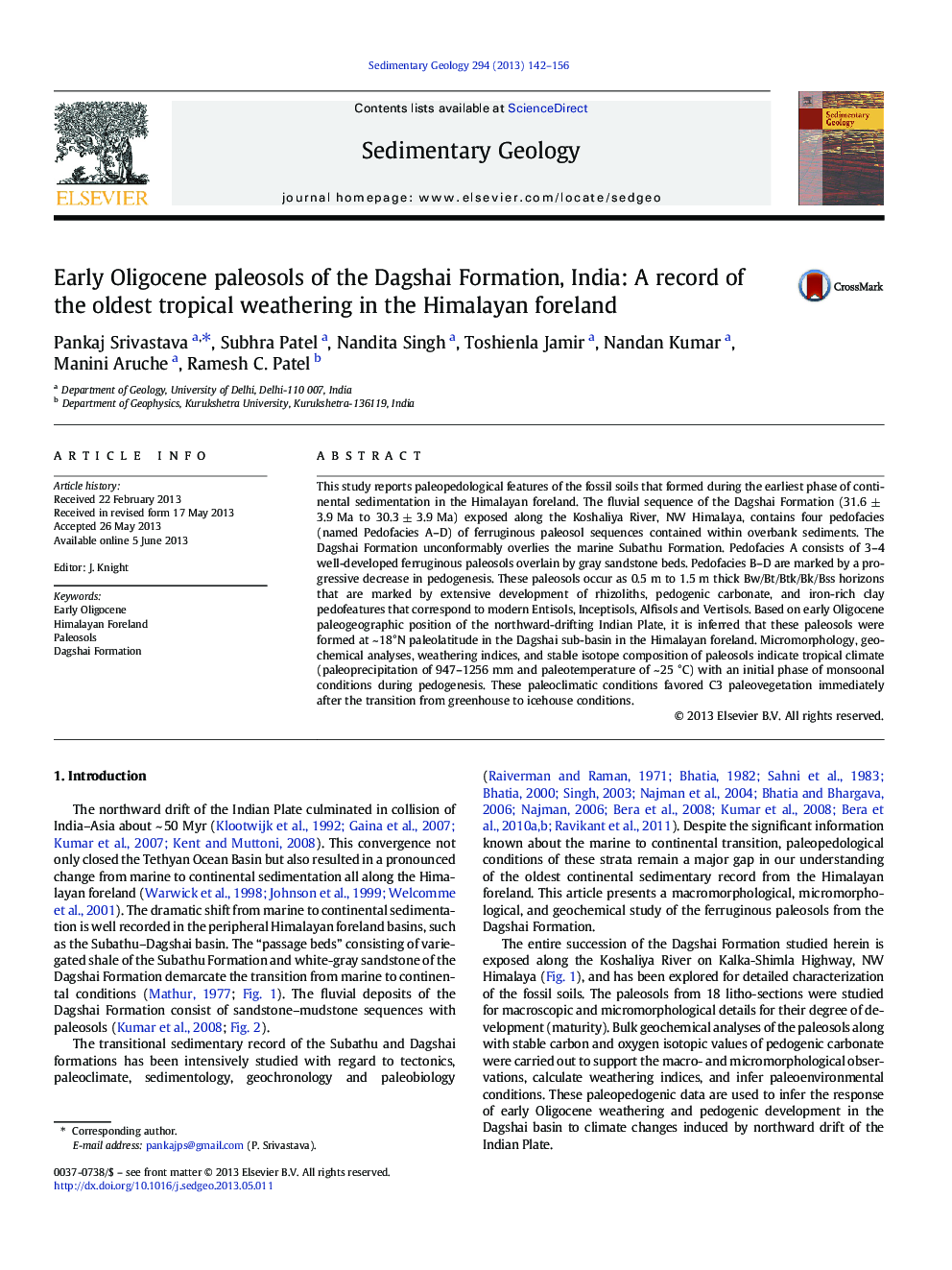| کد مقاله | کد نشریه | سال انتشار | مقاله انگلیسی | نسخه تمام متن |
|---|---|---|---|---|
| 6433203 | 1636069 | 2013 | 15 صفحه PDF | دانلود رایگان |

- Early Oligocene paleosols of Dagshai Formation from Himalayan Foreland.
- The oldest fluvial sequence contains four pedofacies of ferruginous paleosols.
- The paleosols correspond to modern Entisols, Inceptisols, Alfisols and Vertisols.
- The paleosols formed at ~18°N paleolatitude in the Himalayan foreland.
- Paleopedofeatures indicate tropical climate and initial phase of monsoonal conditions.
This study reports paleopedological features of the fossil soils that formed during the earliest phase of continental sedimentation in the Himalayan foreland. The fluvial sequence of the Dagshai Formation (31.6 ± 3.9 Ma to 30.3 ± 3.9 Ma) exposed along the Koshaliya River, NW Himalaya, contains four pedofacies (named Pedofacies A-D) of ferruginous paleosol sequences contained within overbank sediments. The Dagshai Formation unconformably overlies the marine Subathu Formation. Pedofacies A consists of 3-4 well-developed ferruginous paleosols overlain by gray sandstone beds. Pedofacies B-D are marked by a progressive decrease in pedogenesis. These paleosols occur as 0.5 m to 1.5 m thick Bw/Bt/Btk/Bk/Bss horizons that are marked by extensive development of rhizoliths, pedogenic carbonate, and iron-rich clay pedofeatures that correspond to modern Entisols, Inceptisols, Alfisols and Vertisols. Based on early Oligocene paleogeographic position of the northward-drifting Indian Plate, it is inferred that these paleosols were formed at ~ 18°N paleolatitude in the Dagshai sub-basin in the Himalayan foreland. Micromorphology, geochemical analyses, weathering indices, and stable isotope composition of paleosols indicate tropical climate (paleoprecipitation of 947-1256 mm and paleotemperature of ~ 25 °C) with an initial phase of monsoonal conditions during pedogenesis. These paleoclimatic conditions favored C3 paleovegetation immediately after the transition from greenhouse to icehouse conditions.
Journal: Sedimentary Geology - Volume 294, 15 August 2013, Pages 142-156